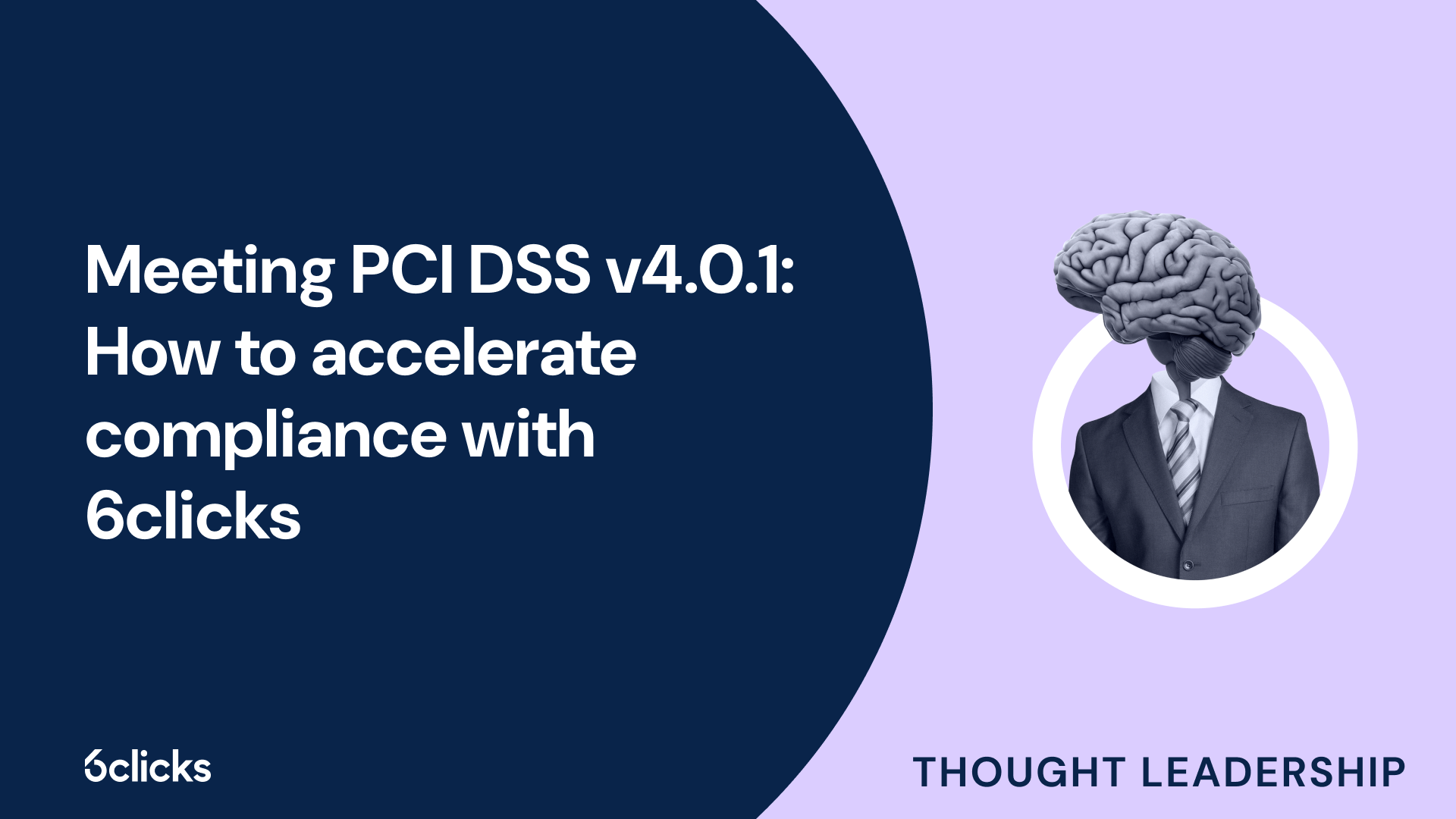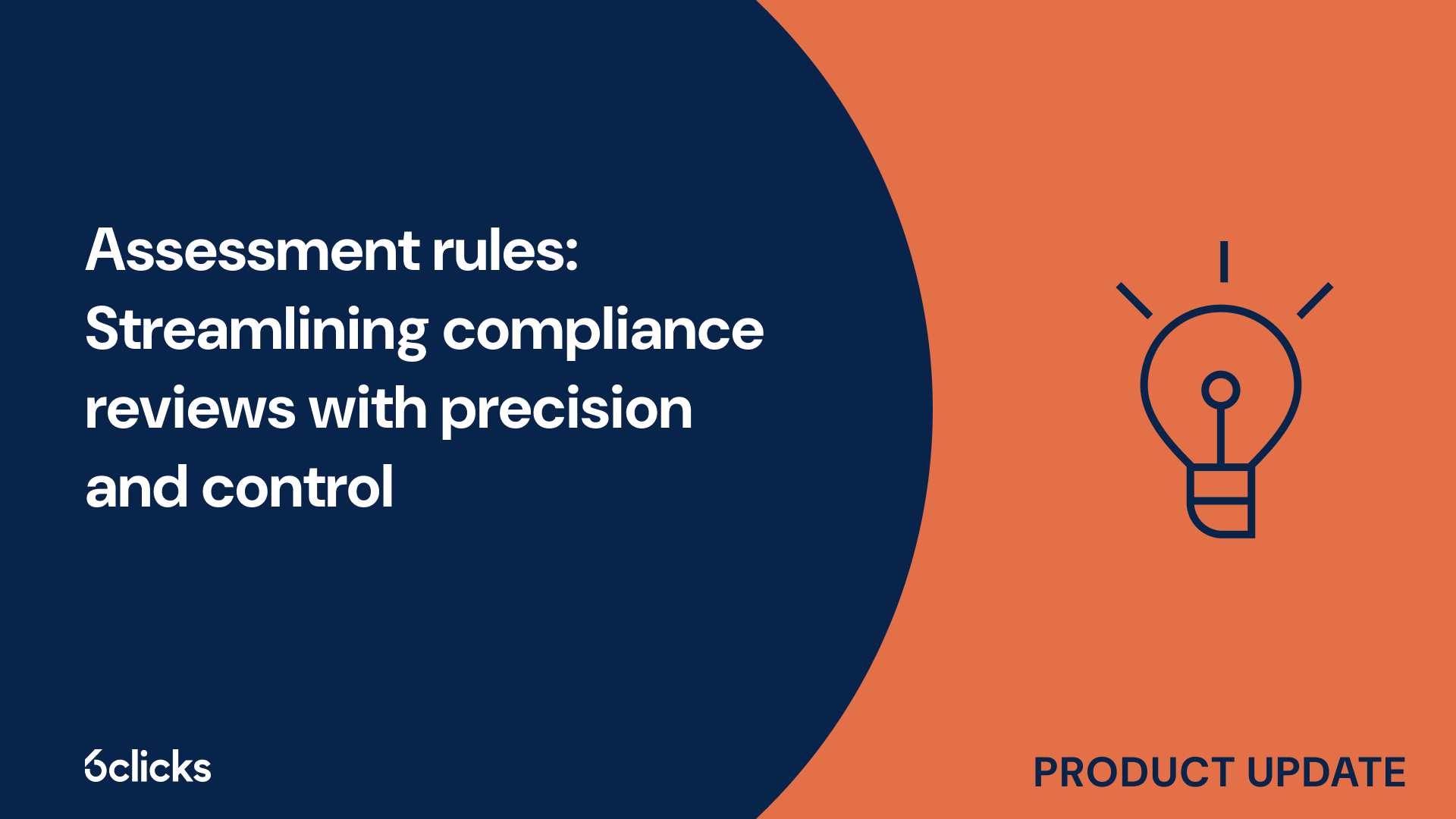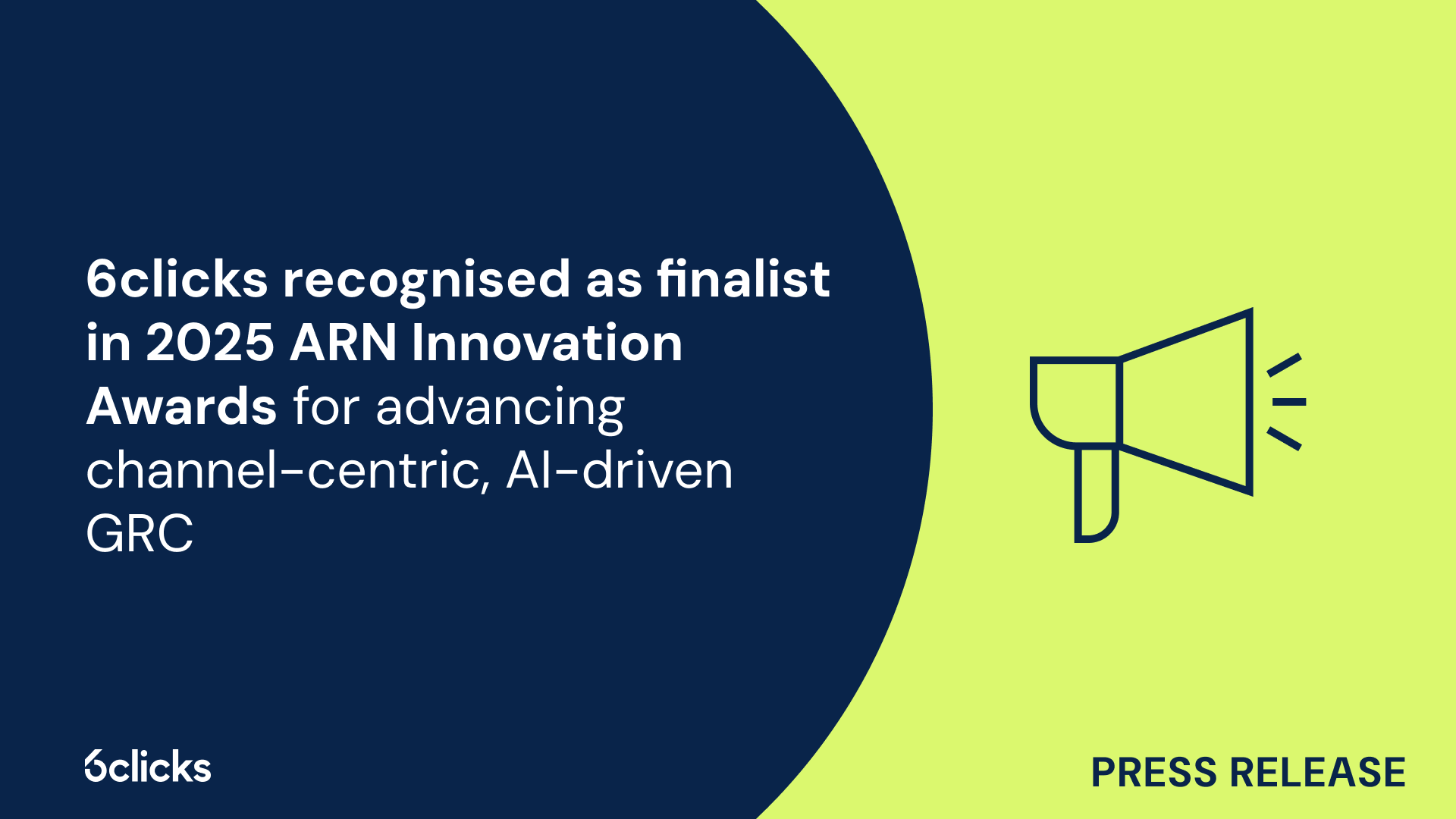The GRC buyer’s guide for 2025: Building resilience with AI-powered, federated solutions
Discover the ultimate GRC buyer's guide for 2025! Uncover how AI-powered, federated solutions transform compliance and security management for industries like government, aerospace, banking, and more. Learn about centralized control, continuous compliance, and advanced cyber GRC capabilities. Download now!
-1.png?width=200&height=249&name=Group%20193%20(1)-1.png)
The GRC buyer’s guide for 2025: Building resilience with AI-powered, federated solutions
What is ISO?
ISO, or the International Organization for Standardization, is an independent, non-governmental international organization that develops and publishes international standards. These standards are designed to ensure that products, services, and systems meet certain requirements and specifications, with the ultimate goal of improving quality, safety, and efficiency across various industries. ISO standards are recognized globally and have a wide range of applications, covering areas such as quality management, environmental management, information security, and many more. These standards provide a framework for organizations to establish effective management systems and processes, enabling them to consistently deliver high-quality products and services that meet customer expectations. In this article, we will explore the three key components of ISO and their importance in achieving organizational excellence.
Overview of ISO components
ISO (International Organization for Standardization) is a globally recognized independent organization that develops and maintains international standards. ISO 9001 is the International standard for Quality Management Systems (QMS) and is applicable to organizations of all sizes and industries.
There are three key components of ISO:
- Quality Management Systems (QMS): ISO 9001 emphasizes the importance of implementing an effective quality management system. This involves defining and documenting processes, establishing a quality policy, setting quality objectives, and ensuring compliance with relevant regulatory requirements. QMS focuses on meeting customer requirements and enhancing customer satisfaction through continual improvement.
- Process Approach: ISO 9001 adopts a process-based approach to quality management. This means that organizations need to identify and manage the interrelated processes that contribute to the achievement of quality objectives. By understanding and controlling these processes, organizations can ensure consistent and predictable outcomes.
- Continuous Improvement: ISO 9001 encourages organizations to continually evaluate and improve their QMS. This involves conducting internal audits, management reviews, and implementing corrective and preventive actions. By identifying areas for improvement and leveraging opportunities for enhancement, organizations can strengthen their performance and competitive advantage.
ISO standards are built on key principles such as customer focus, leadership, involvement of people, process approach, evidence-based decision making, and relationship management. These principles help organizations establish an effective quality management system that drives customer satisfaction, meets regulatory requirements, and supports the continual improvement of their operations.
Three Key components of ISO
ISO, or the International Organization for Standardization, has developed various standards for different areas of management and operations. When it comes to quality management, ISO 9001 is the key standard. It emphasizes three key components that are integral to the success of an organization in meeting quality objectives and customer requirements.
- Quality Management Systems (QMS): ISO 9001 directs organizations to establish and maintain an effective QMS. This involves identifying and documenting processes and procedures, defining a quality policy, setting quality objectives, and ensuring compliance with relevant regulatory requirements. By implementing a QMS, organizations can consistently meet customer expectations and enhance customer satisfaction. Risk-based thinking is also an important aspect of QMS, where organizations are required to identify and address potential risks to their processes and products.
- Process Approach: ISO 9001 adopts a process-based approach to quality management. This means that organizations need to identify, understand, and manage the interrelated processes that contribute to the achievement of quality objectives. By focusing on the processes and their interactions, organizations can ensure consistent and predictable outcomes, minimize errors, and improve efficiency.
- Continuous Improvement: ISO 9001 encourages organizations to continually evaluate and improve their QMS. This involves conducting internal audits, management reviews, and implementing corrective and preventive actions. Continuous improvement is vital to ensure that the QMS remains effective and aligned with the organization's objectives. By identifying areas for improvement and leveraging opportunities for enhancement, organizations can strengthen their performance and gain a competitive advantage.
By incorporating these key components of ISO 9001, organizations can establish a robust QMS that not only meets regulatory requirements but also drives overall improvement and customer satisfaction.
Component 1: quality management principles
Quality Management Principles: The first key component of ISO is based on quality management principles. ISO 9001 emphasizes the importance of these principles to guide organizations in establishing and maintaining an effective quality management system. These principles provide a foundation for organizations to improve their overall performance and achieve customer satisfaction. Some of the key principles highlighted by ISO 9001 include customer focus, leadership, involvement of people, process approach, system approach to management, continual improvement, fact-based decision making, and mutually beneficial supplier relationships. By adhering to these principles, organizations can drive a culture of quality throughout their operations and ensure that all activities are aligned with the needs and expectations of their customers.
Definition and explanation of quality management principles
The ISO 9001:2015 standard is based on seven key quality management principles that organizations should follow to achieve effective quality management. These principles form the foundation of the ISO 9000 suite of quality standards.
- Customer Focus: Organizations must understand and meet customer requirements to enhance customer satisfaction. This includes identifying their needs, expectations, and feedback to continually improve products and services.
- Leadership: Leaders at all levels should establish a unified direction and create an environment where individuals are engaged and motivated to achieve organizational objectives. Setting clear goals and promoting a culture of quality are crucial.
- Engagement of People: People are the heart of any organization, and their full involvement ensures their abilities are used effectively. This principle recognizes the importance of training, empowerment, and recognition to promote employee engagement and overall success.
- Process Approach: Adopting a process-based approach ensures that activities within an organization are managed consistently and systematically. This involves understanding and optimizing the interdependencies between various processes to achieve desired outcomes.
- Improvement: Emphasizing continuous improvement is essential for meeting evolving customer needs and enhancing organizational performance. This principle encourages proactive measures to identify areas for improvement, implementing corrective actions, and fostering a culture of innovation.
- Evidence-Based Decision Making: Decisions are most effective when they are based on analysis and evaluation of accurate data and information. This principle encourages organizations to collect, analyze, and use relevant data to make informed decisions and continually improve processes.
- Relationship Management: Organizations should form mutually beneficial relationships with external partners and suppliers. This principle emphasizes the importance of building strong relationships, managing risks, and collaborating to enhance overall performance.
By adhering to these principles, organizations can establish an effective quality management system aligned with the ISO 9001:2015 standard. This framework provides a solid foundation for improving customer satisfaction, achieving business objectives, and maintaining a competitive advantage in today's dynamic business landscape.
Application of quality management principles to ISO standards
Quality management principles serve as the foundation for ISO standards and play a crucial role in building an effective quality management system. ISO standards, such as ISO 9001:2008, provide guidelines and requirements that organizations can follow to ensure quality practices and meet customer expectations.
The application of quality management principles to ISO standards ensures that organizations adopt a systematic and structured approach to quality management. For example, the principle of customer focus requires organizations to understand and meet customer requirements. ISO 9001, a widely recognized quality management standard, outlines specific requirements in terms of identifying and defining customer needs, monitoring customer satisfaction, and continuously improving products and services based on customer feedback.
Another key principle, the process approach, is central to ISO standards. This principle emphasizes the importance of understanding and optimizing interdependencies between various processes within an organization. ISO 9001 requires organizations to document their business processes, identify process interactions, and implement controls to ensure consistency and continuous improvement.
By aligning with quality management principles, ISO standards provide organizations with a framework for building an effective quality management system. They enable organizations to focus on key aspects such as customer requirements, process optimization, and continual improvement. The application of these principles to ISO standards ensures that organizations have the necessary tools and guidelines to establish and maintain an effective quality management system, leading to enhanced customer satisfaction, improved operational efficiency, and a competitive advantage in the market.
Component 2: process approach
The process approach is a fundamental component of ISO standards. It is based on the principle that organizations should understand and optimize the interdependencies between various processes within their operations. This approach ensures that organizations have a clear understanding of how different processes work together to achieve their objectives. ISO 9001, for example, requires organizations to document their business processes, identify process interactions, and implement controls to ensure consistency and continuous improvement. By adopting a process approach, organizations are able to streamline their operations, identify areas for improvement, and effectively manage risks. This component of ISO standards is essential for organizations to develop and maintain an effective quality management system.
Definition and explanation of process approach
The process approach is a key component of ISO standards that emphasizes the importance of viewing an organization's activities as a series of interconnected processes. It involves identifying, documenting, and evaluating these processes to ensure effective and efficient operations.
ISO standards, such as ISO 9001, require organizations to adopt a process approach to quality management. This approach focuses on understanding the inputs, activities, and outputs of each process within the organization. By doing so, organizations can more effectively identify areas for improvement and implement corrective actions.
Documenting processes is an essential part of the process approach. It helps organizations understand how each process contributes to the overall objectives and outcomes. By documenting processes, organizations can identify potential bottlenecks, areas of inefficiency, and opportunities for improvement.
Understanding processes is another important aspect of the process approach. It enables organizations to evaluate the effectiveness of their processes and identify any gaps or deviations from desired outcomes. By understanding processes, organizations can implement changes and improvements to enhance overall performance and meet customer requirements.
Evaluating processes is crucial to preparing for ISO 9001 audits. It involves conducting internal audits to assess the effectiveness and compliance of processes with ISO standards. By evaluating processes, organizations can identify areas of non-conformance and take corrective actions to ensure compliance with ISO requirements.
Benefits of applying the process approach to quality management systems
Applying the process approach to quality management systems offers several valuable benefits for organizations. One significant advantage is the ability to overcome the problem of departmental silos, fostering a more integrated and holistic approach to operations. Traditionally, organizations have operated in separate departments with limited communication and coordination between them. However, the process approach emphasizes the interconnectedness of various processes and functions within the organization. This approach breaks down barriers and encourages collaboration, enabling departments to work together towards common goals and objectives.
Additionally, the process approach promotes a customer-centric mindset throughout the organization. By understanding the inputs, activities, and outputs of each process, organizations can align their efforts with customer requirements and expectations. This customer-focused approach ensures that quality management systems are developed and implemented with the ultimate goal of delivering products and services that meet or exceed customer satisfaction.
Moreover, the process approach promotes horizontal management, accountability, and coordination across departments. Instead of a top-down hierarchical structure, the process approach encourages the involvement and engagement of all employees. Each individual becomes accountable for their specific role within the process, understanding how their actions impact the overall quality management system. This horizontal management approach fosters a sense of ownership and responsibility, leading to enhanced performance and efficiency.
The ISO/TC 176, the technical committee responsible for developing ISO 9001, provides guidance on the process approach for management systems. The committee highlights that an effective process approach considers the context of the organization, identifies process inputs and outputs, ensures the availability of necessary resources, establishes key performance indicators, and monitors and measures process performance. By following this guidance, organizations can optimize their quality management systems and drive continuous improvement. In conclusion, the process approach offers numerous benefits, enabling organizations to overcome departmental silos, adopt a customer-centric mindset, and promote horizontal management and accountability.
Component 3: regulatory requirements
Adhering to regulatory requirements is a critical component of ISO compliance. Regulatory requirements encompass the laws, regulations, and guidelines that organizations must follow to ensure their products and services meet legal standards and industry-specific regulations. These regulations may vary depending on the industry and the country in which the organization operates. By incorporating regulatory requirements into their quality management systems, organizations can ensure that their processes and practices align with the necessary legal obligations. This includes conducting risk assessments, implementing appropriate controls, and regularly reviewing and updating processes to remain compliant. By proactively addressing regulatory requirements, organizations can mitigate potential risks, avoid legal penalties, and maintain the integrity and reputation of their operations. Component 3, regulatory requirements, serves as a vital element in building an effective ISO-compliant quality management system and ensuring the overall success and longevity of the organization.
Definition and explanation of regulatory requirements
ISO standards are internationally recognized frameworks that provide guidelines for implementing effective quality management systems. One crucial aspect of ISO standards is regulatory requirements. These requirements ensure organizations comply with legal and regulatory obligations related to their products, services, and operations.
For ISO 45001 certification, the regulatory requirements focus on occupational health and safety. Organizations must identify and comply with applicable legal requirements, such as workplace safety regulations, emergency response plans, and hazardous waste disposal guidelines. ISO 45001 also emphasizes the need for risk management activities to prevent workplace accidents and improve employee well-being.
On the other hand, ISO 9001 certification focuses on quality management systems. The regulatory requirements for ISO 9001 include adhering to customer requirements as well as legal and regulatory obligations related to the quality of products and services. This ensures that organizations meet customer expectations while operating within the confines of applicable laws and regulations.
To achieve ISO 9001 certification, organizations must maintain certain mandatory documents. These include a quality manual, quality policy, scope of the quality management system, documented procedures, work instructions, and records. Effective document management is crucial for ISO 9001 certification as it ensures that the organization's quality management system is documented accurately and consistently, facilitating compliance and continual improvement.
Advantages to meeting regulatory requirements with ISO standards
Meeting regulatory requirements with ISO standards offers several advantages for organizations. ISO standards provide a robust framework for compliance, addressing regulatory requirements and helping organizations meet their legal obligations. By following ISO standards, companies can ensure that their operations, products, and services align with the necessary regulations, reducing the risk of non-compliance and potential penalties or legal issues.
ISO standards also provide clear guidelines and processes that enable companies to ensure product safety, quality, and customer satisfaction. These standards outline the necessary steps and controls to maintain high standards throughout various business processes. By adhering to ISO standards, organizations can effectively identify and manage risks, implement corrective and preventive actions, and continually improve their processes. This not only leads to consistency in product quality and safety but also enhances customer satisfaction by meeting or exceeding their expectations.
Furthermore, meeting regulatory requirements through ISO certification gives organizations a competitive advantage in the market. ISO certification demonstrates a commitment to quality, compliance, and customer focus. It enhances the company's reputation as a trustworthy and reliable supplier, fostering customer confidence and loyalty. ISO certification also opens doors to new market opportunities that require or prefer ISO-compliant suppliers, giving certified organizations a competitive edge over their non-certified competitors.
Summary
ISO 9001:2008 is an international standard that provides guidelines for implementing an effective quality management system. It focuses on three key components: meeting customer requirements, continuous improvement, and implementation of the standard's requirements.
Meeting customer requirements is essential for any organization's success. ISO 9001 emphasizes the importance of understanding and fulfilling customer expectations by ensuring that products and services meet their needs. This ensures customer satisfaction and loyalty.
Continuous improvement is a fundamental principle of ISO 9001. It encourages organizations to regularly evaluate and enhance their processes and operations. By identifying areas for improvement, organizations can increase efficiency, reduce waste, and enhance quality.
Implementing ISO 9001 requirements brings several benefits. It helps organizations establish a systematic approach to quality management, ensuring compliance with legal and regulatory requirements. Moreover, it enhances the company's reputation and provides a competitive advantage by demonstrating a commitment to quality and customer satisfaction.







